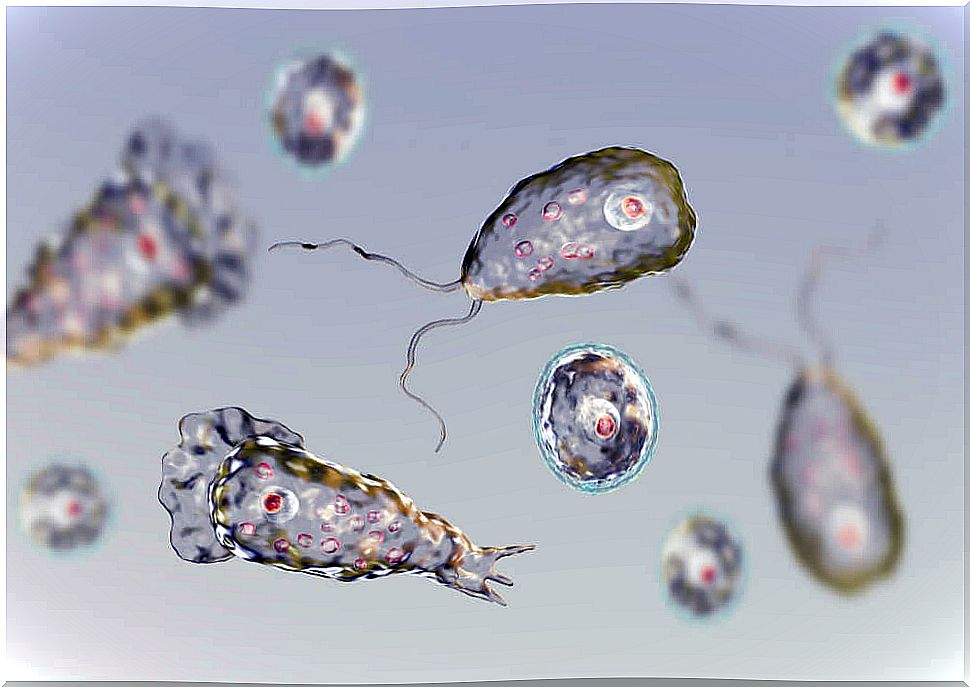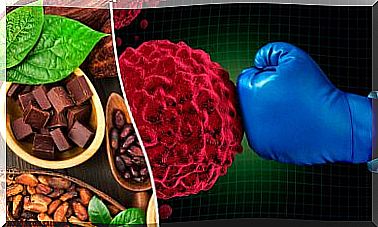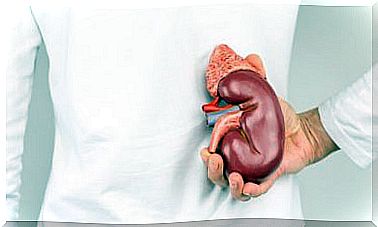The Brain-eating Amoeba: Naegleria Fowleri
Microorganisms are the main causes of many diseases in the world. Among the entire universe of pathogens that exists and that can affect humans, we have Naegleria fowleri .
The term infection is surely associated with bacteria and viruses, which are included among these pathogens, but did you know that there are amoebas that cause infections in the brain? In this article we discuss the curious case of an amoeba known as the brain-eating amoeba.
What are amoebas?
Amoebas are protozoa, free-living eukaryotic microorganisms, which cause serious infections in people. The pathologies they cause are characterized by a high mortality rate, which is a challenge for their diagnosis and treatment.
Of all the genera that exist in nature, only four cause infections in humans and animals, among which we find the following species:
- Balamuthia mandrillaris (genus Balamuthia )
- Naegleria fowleri (genus Naegleria )
- Sapinia pedata (genus Sapinia )
- Various species of Acanthamoeba
These amoebas can be found in various media, both in water and in soil and air. But above all, amoebas nest in places where water is stagnant, such as sewage, swimming pools, aquariums and even in the liquid of contact lenses.
Likewise, they are protozoa that need to complete their life cycle within an organism that acts as a host, which is why they are considered parasites. Amoeba infections directly affect the central nervous system, being fatal in most cases.

Naegleria fowleri
This parasite, known as the brain-eating amoeba, is the cause of primary amebic meningoencephalitis (MAP), a chronic infection that lasts for a few days until, in most cases, it causes the death of the host. It mainly affects young adults and healthy children, that is, immunocompetent patients.
People who become infected with this amoeba are those who have bathed or been in contact with contaminated fresh water such as:
- Heated pools
- Ponds
- Lakes
- Sewer systems
Transmission occurs by inhalation of water infested by Naegleria fowleri . From that moment, it enters through the nostrils until it reaches the olfactory bulb that is in contact with the frontal lobe of the brain.
Symptoms of this disease appear between days 5 and 7 after infection, and develop rapidly within 24 hours. When the organism reaches the olfactory bulbs, an inflammatory response is induced, and hemorrhagic areas in the cerebral cortex become evident.
Symptoms that appear in the earliest stages are those common to meningitis, with headaches, high fever over 38ºC, stiff neck, nausea, vomiting, and abnormal behavior.
Later, these symptoms are accentuated so that the patient comes to suffer seizures, or even go into a coma. Eventually, nerve palsy caused by cerebral edema settles and increased intracranial pressure leads to death.
Diagnosis for Naegleria fowleri
For early diagnosis , direct analysis of cerebrospinal fluid, neuroimaging and magnetic resonance imaging are performed. Microscopic examinations are also done, both of the cerebral hemispheres, brainstem, cerebellum, as well as the upper part of the spinal cord.
The development of real-time PCR assays makes it possible to specifically identify the presence of amoebae from microbiological cultures.
An early diagnosis is key to curbing the infection. In fact, less than 5% of people with this condition survive if it is not detected in the earliest stages. Therefore, it is essential that the patient describe having been in contact with fresh water.
It is often challenging to diagnose amoebic meningoencephalitis infection due to the following considerations:
- Lack of the necessary tools to detect it
- Lack of knowledge in the health team
- Antibiotic resistance
- Risk factors in countries where symptoms similar to other infections, such as meningitis, develop

Treatment
There are few cases of patients who have survived primary amebic meningitis. The medicine used to treat this disease is the antifungal compound called amphotericin .
This drug is very effective against Naegleria fowleri , as long as it is used in the earliest stages of infection. In a published study on a related case, different antibiotics were used and amphotericin B was the one that showed the greatest efficacy, so that the patient managed to recover successfully.
On the other hand, it has been shown that phenothiazine compounds (chlorpromazine and trifluoperazine) are able to eliminate this protozoan. In the same way, the antibiotic azithromycin has positive effects. Finally, the use of miltefosine is also detrimental to free-living amoebae.
Early diagnosis is crucial in Naegleria fowleri
As we have seen, infections caused by amoebae are relatively infrequent, and are probably due to the difficulties that hinder their diagnosis. However, cases increase over the years, posing a problem for public health.
Therefore, there is an urgent need for research to be devoted to the study of these diseases to advance diagnosis and treatment. A timely suspicion would save lives and decrease the lethality of the brain-eating amoeba.









